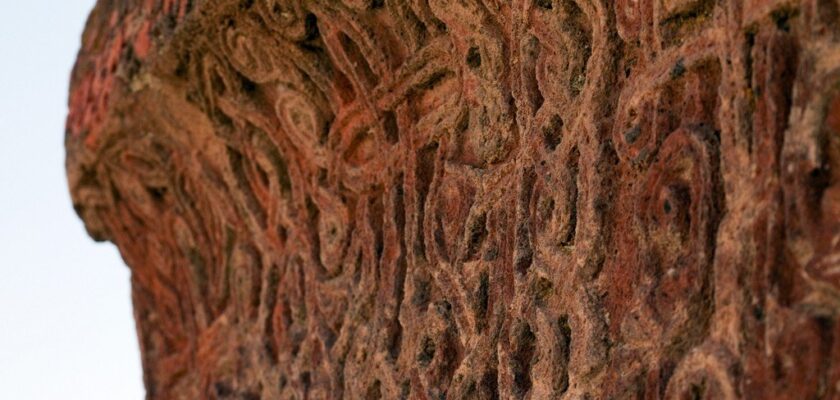Echmiadzin Monastery (Armenian Էջմիածնի Մայր Տաճար)
Echmiadzin is a monastery of the Armenian Apostolic Church; seat of the See of the Supreme Patriarch Catholicos of All Armenians from 303-484, and again from 1441. It is located in the town of Vagharshapat, Armavir province, Armenia. It is included in the UNESCO World Heritage List.
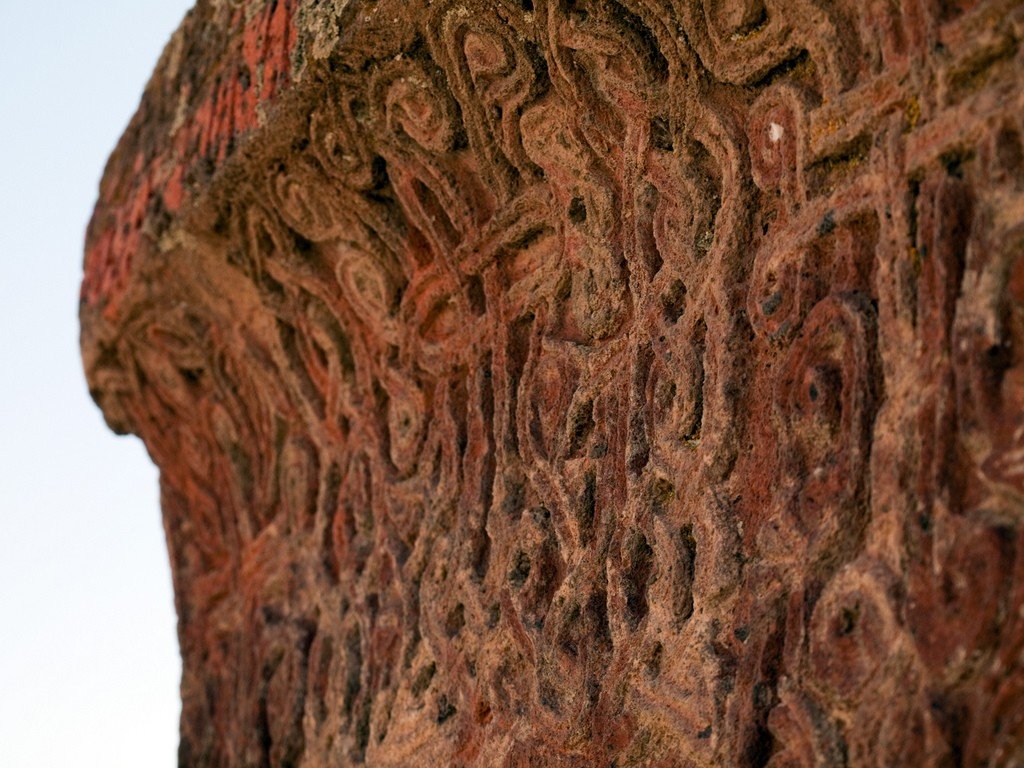
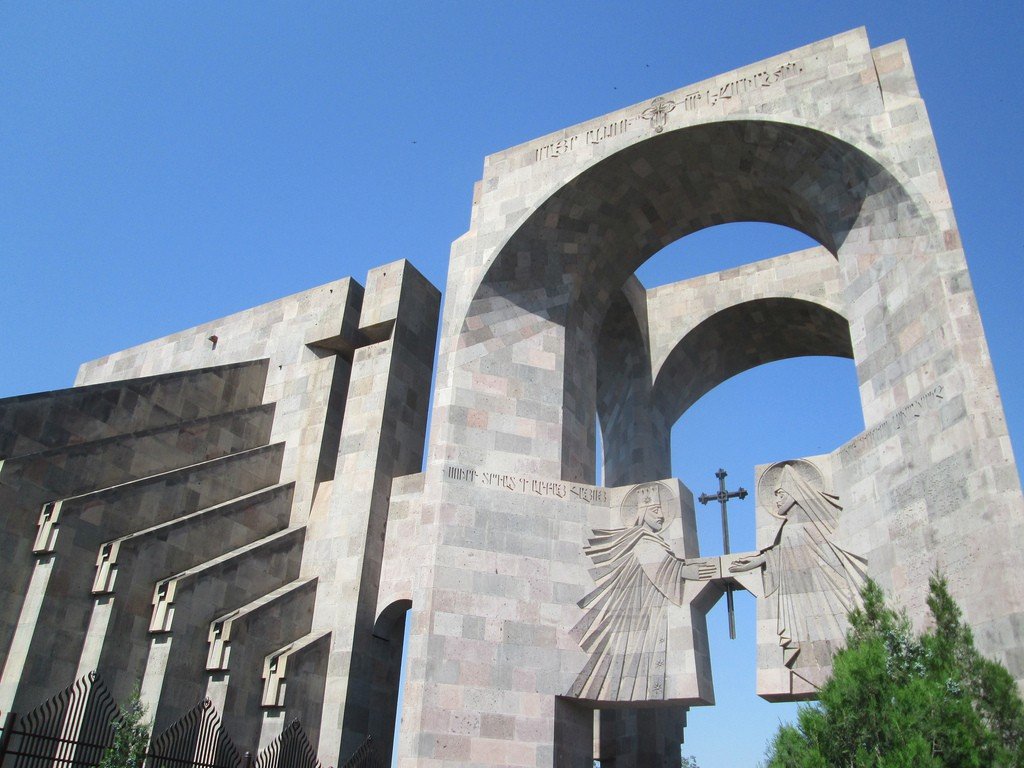
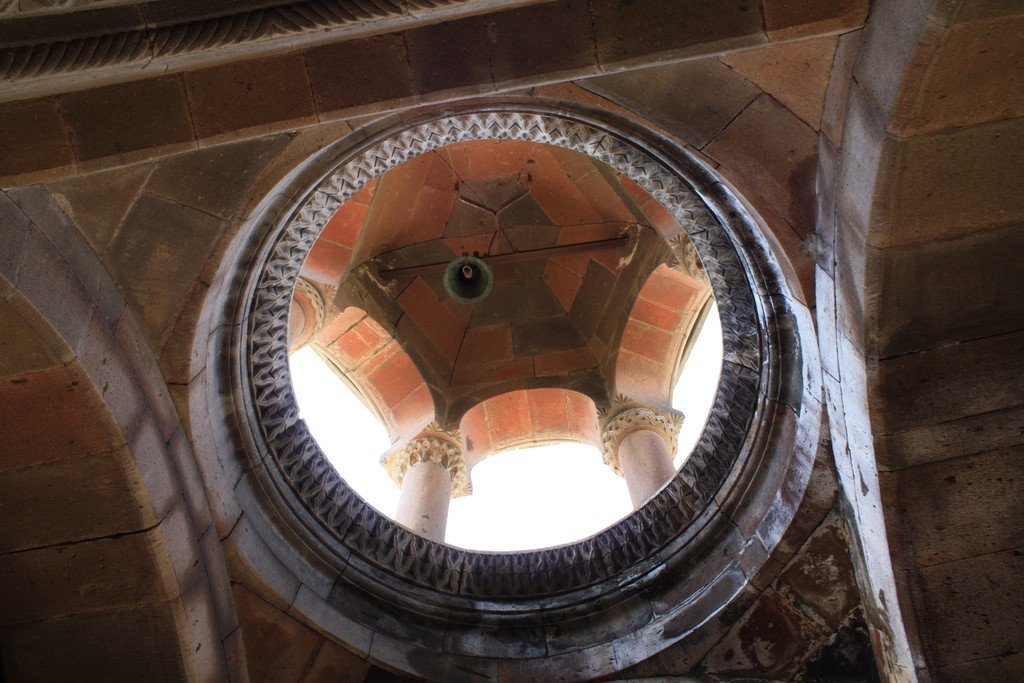
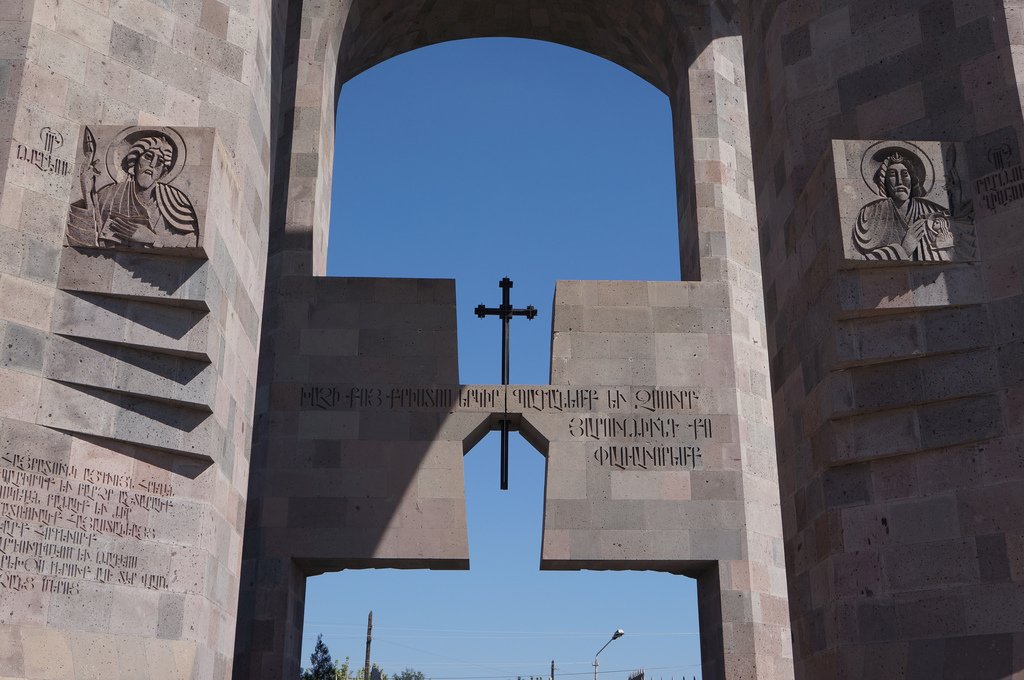
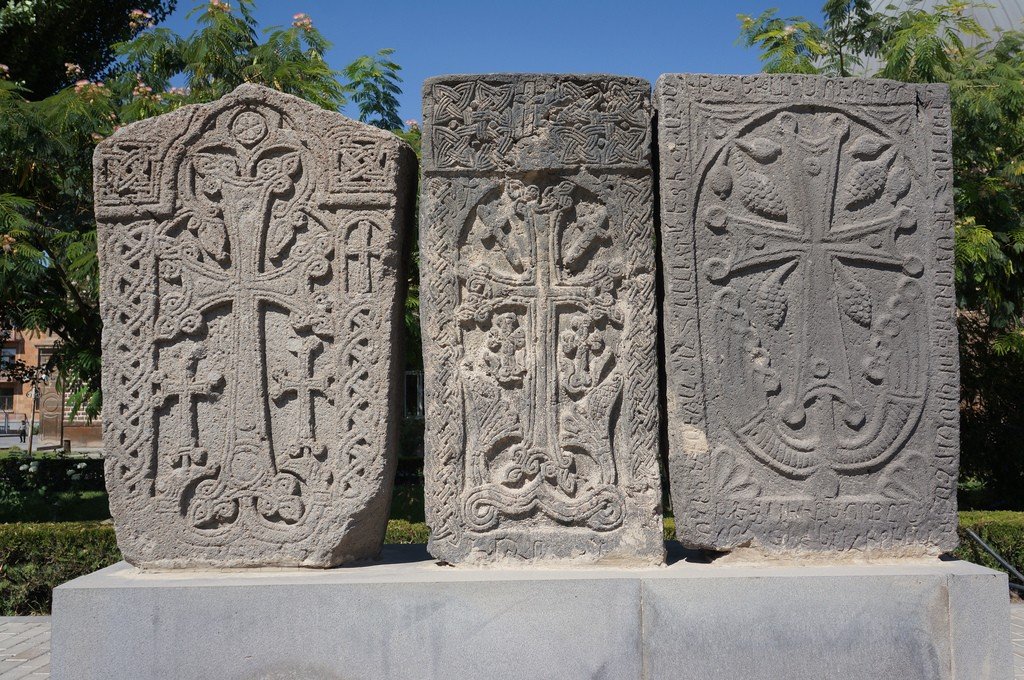
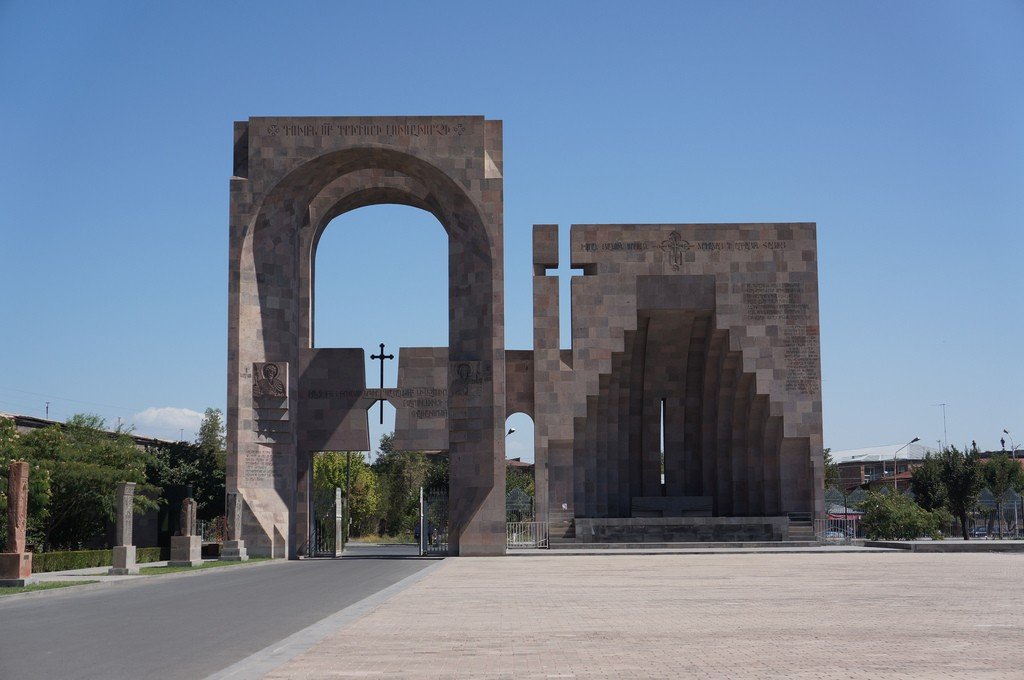
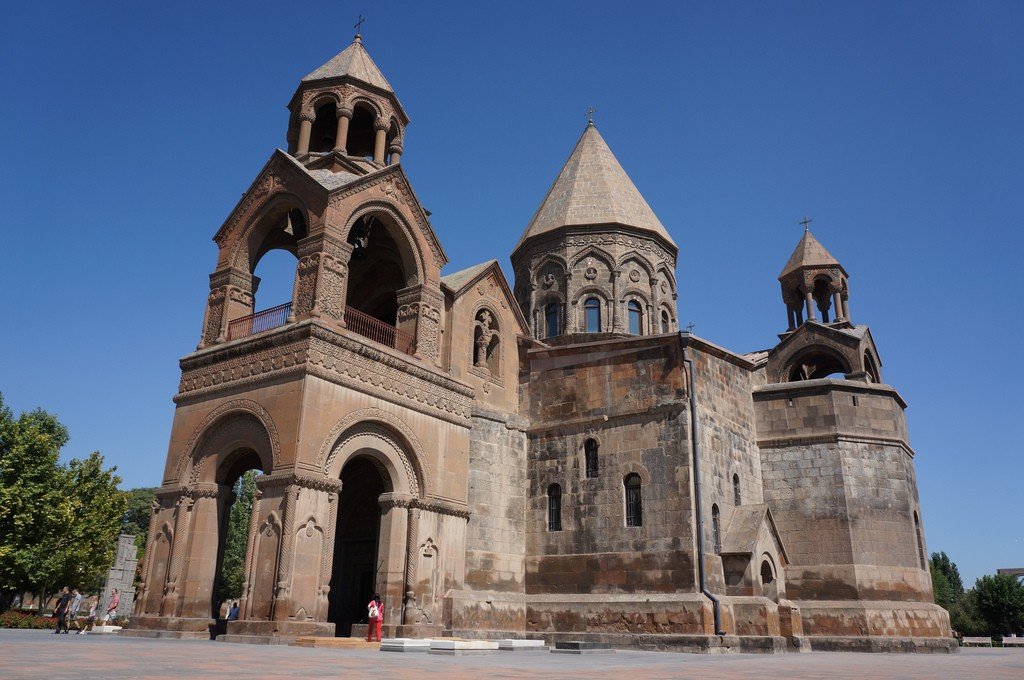
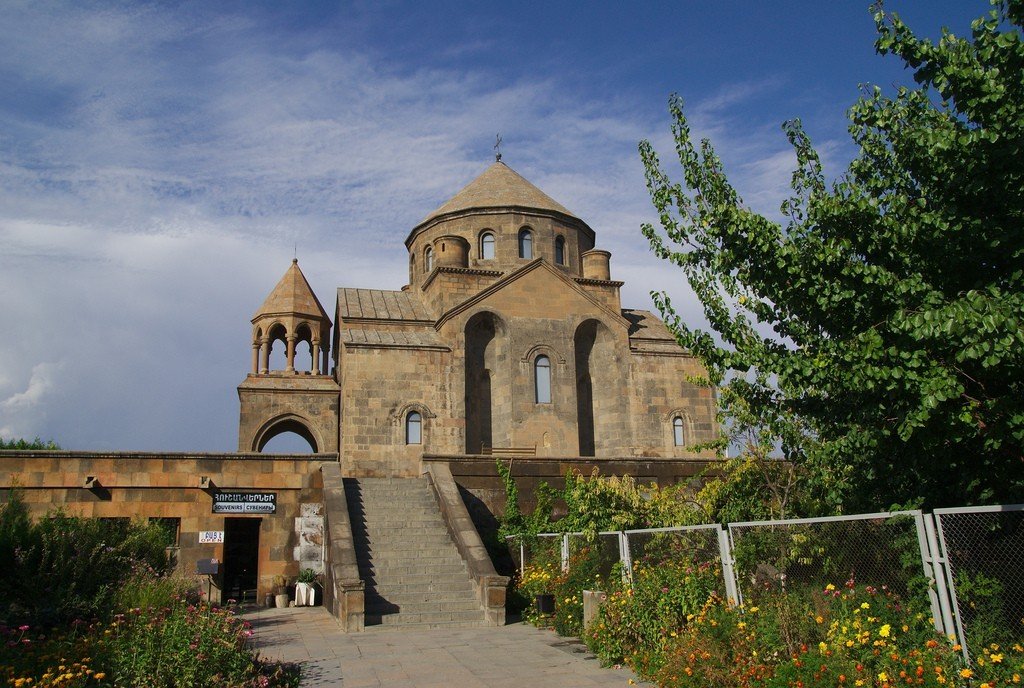
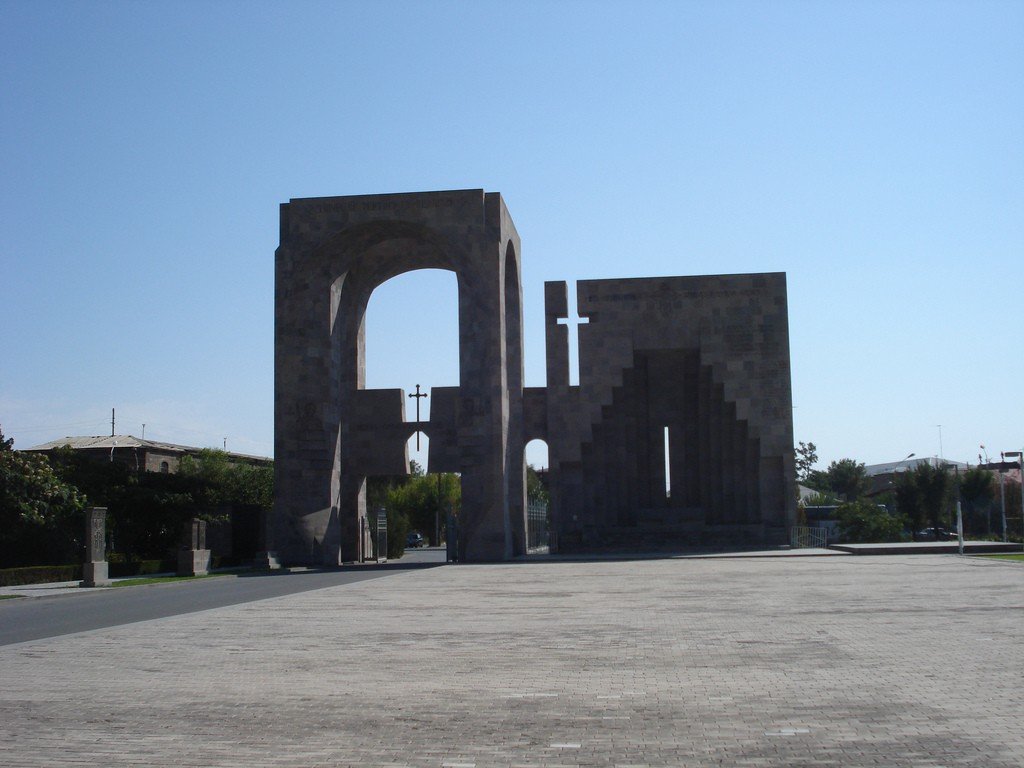
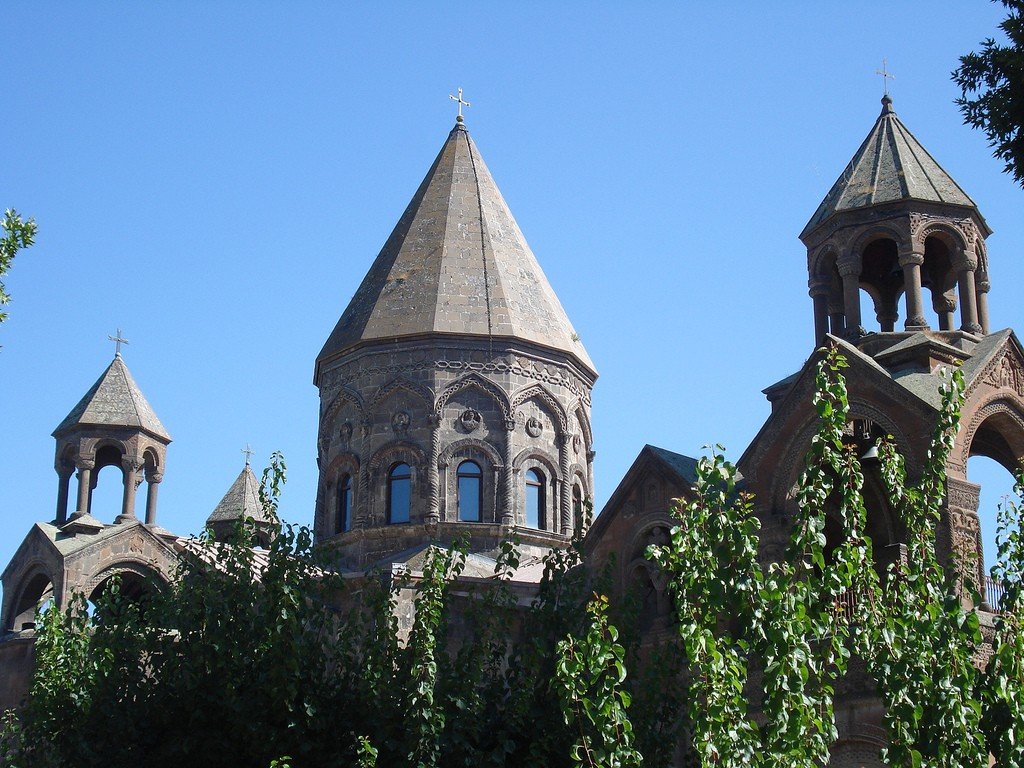
History
Echmiadzin – whose former name was Vagharshapat – was founded in the first half of the 2nd century on the site of the ancient settlement of Vardgesavan. Since 163, after the Roman destruction of Artashat, the city became the political, cultural, and then religious and educational center of the country.
.
In 301, Christianity became the state religion of Armenia.
.According to legend, the first patriarch Grigor Lusavorich (Illuminator) dreamed that the only begotten, i.e. Christ, descended from heaven with a hammer of fire in his hands and indicated the place for the construction of a cathedral. On this place in 303, where there was an ancient pagan temple, and was laid the church, named Echmiadzin, which in Armenian means “the place of the descent of the Only Begotten.”
The church was founded. As Armenia was often deprived of statehood, the role of the supreme religious head of all Armenians, the Catholicos, became increasingly important. Therefore, the Echmiadzin Cathedral, as the most permanent center of spiritual power of the country, although often destroyed, but also improved more than other monasteries..
In the 15th century, an open vestibule of the main entrance was added to the western part of the church, above which a bell tower with lavish architectural decoration was erected. At the same time the inner walls of the cathedral were decorated. The decoration of the cathedral was completed in 1786 by the talented artist Hovnatanian.
.
In addition to ornaments and other decorations, the artist painted many scenes on the themes of Holy Scripture, made more than 120 portraits of saints and apostles, and restored many old ones. During the following years, many of the frescoes were destroyed.
.In the twentieth century a thorough restoration was carried out. The columns and arches supporting the dome were strengthened, and the dome itself was clad in lead. A new altar was built of marble. The floor of the church was also paved with marble. The paintings inside the church were renewed and added to.
.What to see
A rare feature of the cathedral is that, in addition to the main altar in its eastern part, it has three other altars. Two of them are respectively in the southern and northern parts, and the third is not so much an altar as a holy place. According to tradition it was on this place that Christ descended in his apparition.
To the left of the entrance to the territory of the monastery is the Echmiadzin printing house, founded in 1772, and to the right are the cells of the monks.
.There are many cross-stones on the territory of the monastery. Among them are Amenaprkich (1279), and cross-stone XVII, transported from the cemetery of Old Jugha, and recently installed modern cross-stone – to the victims of the genocide of 1915.
.Echmiadzin is the residence of the Armenian patriarch, the Catholicos of all Armenians. His palace is located in the courtyard of the monastery. At the entrance to the residence of the Catholicos stands the “Tiridat Gate”. Although they have been rebuilt many times, stone blocks of the IV century have been preserved at their base. It is believed that the place of this gate was the palace of Armenian kings.
.On the territory of the monastery complex there is also the Spiritual Academy of St. Echmiadzin. This is the only educational institution of this type in the world. There are not many students – only 50 people. Here mainly the following subjects are studied: logic, rhetoric, psychology, world history, philosophy and languages. Of the languages they study especially carefully Old Greek, Russian, English, Armenian – both modern and Old Armenian.
.
The first Armenian school was also opened at the monastery.
.On the territory of Echmiadzin there is also a seminary building built in the nineteenth century. The great composer Komitas taught here, and now there is an art museum named after him. There is a collection of works by major artists of the twentieth century: Saryan, Khanjyan, Kochar.
.Other churches of Echmiadzin
Echmiadzin is also called the city of churches. This is not in vain: in addition to the Echmiadzin Monastery, there are three other ancient monuments here. According to legend, these temples were erected in honor of martyrs – the first Christian women who fled from Rome from the persecution of the emperor. These temples are: Surb Ripsime, Surb Gayane and Surb Shoghakat.
.The temple of Surb Ripsime was built in 618. It is a slender and majestic structure. Inside the church has the shape of a rectangle in which a cross is inscribed, formed by four semicircular apses. In the four corners there are aisles. From one of them you can enter the crypt under the altar, where according to legend Ripsime was buried. The decoration of the building is very modest. In 1790 a two-story bell tower with an eight-column belfry was added to it. In the narthex of the church are kept, inlaid with mother-of-pearl, the throne gates of 1741.
.
The temple of Surb Gayane was erected in 630 on the site of a chapel of the IV century. It is one of the best monuments of Armenian architecture. The exterior of the temple is characterized by slender proportions. The laconic and austere building of the church is decorated only with ornaments on plant motifs on the frames of doors and windows. Rectangular room of the church from the inside is divided by two rows of columns into three parts. The columns are designed to bear the weight of the dome, resting on a slender octagonal drum. In 1652 it was thoroughly renewed, and in 1683 a gallery was added to it for the burial of the hierarchs of the Armenian Church. On the outermost domes of the gallery there are elegant belfries. The architectural details have ornamental carvings. Above the entrance there is a mural of the XVII century on the birth of Christ.
.The temple of Surb Shoghakat was erected in 1694. It is notable for its peculiar architecture, known as the “domed hall”. The only door leading into the church opens from a vaulted gallery on the west side. The dome of the church is supported from the inside by only a few columns. Thanks to careful calculations, the builders safely dispensed with intermediate supports. The vaulted gallery above the entrance is crowned with a six-column belfry. The strict form of details and decoration has much in common with the arrangement of the main cathedral and the church of St. Ripsime.
.How to get there
Getting to the religious capital of Armenia – Echmiadzin is very easy. In Yerevan, at the intersection of Saryan Street and Mashtots Avenue, to the right of the avenue, there is a cluster of cab drivers and minibuses that go directly to Echmiadzin.
.
Prices are roughly as follows:
.- marshrutka: 200-300 AMD;
- cab: AMD 1200 per car. If there are 4 people, the sum is divided for all of them. If you are alone, you can persuade the cab driver for AMD 1000. It is worth noting that shuttle buses mostly go in the morning and evening, and in the afternoon there are almost none, so if you are an opponent of cabs, keep this fact in mind. .
- Bus: You can leave Echmiadzin (Vagharshapat) from Kilikia central bus station by bus #202 or minibus #203, the fare will be AMD 300 and AMD 250 respectively.
